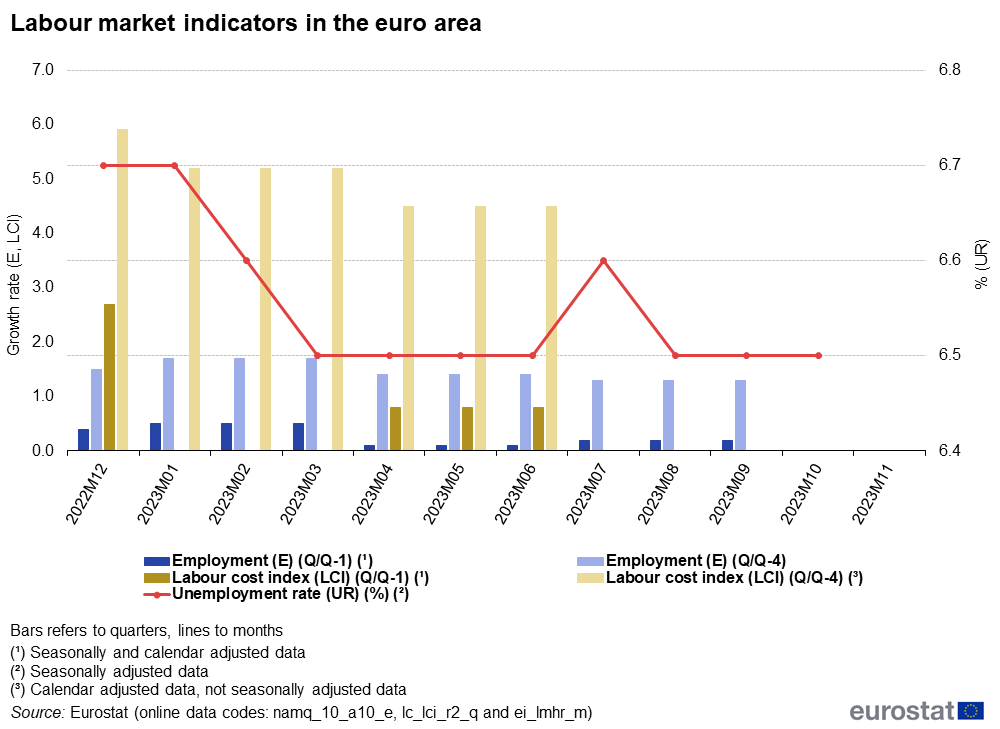What Are Labour Market Indicators?

Imagine the labour market as a vast ocean. Just as sailors rely on navigational tools to steer their ships, economists and policymakers use labour market indicators to navigate the complexities of the job market. But what exactly are these indicators, and why are they so crucial? Let's dive in and explore the world of labour market indicators, their significance, and how they shape our understanding of economic health.
Understanding Labour Market Indicators
Labour market indicators are essential tools that provide insights into the state of the job market. They help us understand labour market trends, employment rates, and other economic indicators that reflect the health of the workforce. Think of them as the compass and map that guide us through the ever-changing landscape of employment and economic data.
The Importance of Labour Market Indicators
Why should you care about labour market indicators? Well, these indicators are the lifeblood of economic analysis. They help governments, businesses, and individuals make informed decisions. For instance, policymakers use these indicators to craft labour policies, while businesses rely on them to plan their hiring strategies. As for individuals, understanding these indicators can help you make better career choices and prepare for future job market shifts.
Key Labour Market Indicators
There are several key labour market indicators that economists and analysts closely monitor. Let's break down the most important ones:
Employment Rates
Employment rates are perhaps the most straightforward and widely recognized labour market indicator. They measure the percentage of the workforce that is currently employed. High employment rates generally indicate a healthy economy, while low rates may signal economic distress. For example, during the 2008 financial crisis, employment rates plummeted, reflecting the severe economic downturn.
Unemployment Rates
Unemployment rates, on the other hand, measure the percentage of the workforce that is actively looking for work but unable to find it. This indicator is crucial for understanding the job market's demand and supply dynamics. High unemployment rates can lead to social issues like poverty and inequality, making it a critical metric for policymakers.
Labour Force Participation Rate
The labour force participation rate measures the proportion of the working-age population that is either employed or actively seeking employment. This indicator provides a broader picture of the job market by including those who are unemployed but looking for work. A declining participation rate can indicate a shrinking workforce, which can have long-term economic implications.
Wage Growth
Wage growth is another vital labour market indicator. It reflects the changes in average wages over time. Steady wage growth is a sign of a healthy economy, as it indicates that workers are earning more, which can lead to increased consumer spending and economic growth. Conversely, stagnant or declining wages can signal economic trouble.
Analyzing Labour Market Trends
Labour market trends provide a long-term view of how the job market is evolving. By analyzing these trends, we can identify patterns and make predictions about future economic conditions. For example, the rise of the gig economy and remote work are recent trends that have significantly altered the labour market landscape.
To stay ahead of the curve, it's essential to keep an eye on these trends. Websites like the Bureau of Labor Statistics offer comprehensive data and analysis on labour market trends. They provide valuable insights into workforce statistics and economic data, helping you make informed decisions.
The Role of Economic Indicators in Job Market Analysis
Economic indicators play a pivotal role in job market analysis. They provide a snapshot of the overall economic health, which directly impacts the labour market. For instance, indicators like GDP growth, inflation rates, and consumer confidence can all influence employment rates and wage growth.
For a deeper dive into economic indicators, you can explore resources like the International Monetary Fund and the World Bank. These organizations offer a wealth of information on global economic trends and their impact on labour markets.
Conclusion
In conclusion, labour market indicators are indispensable tools for understanding the job market's health and making informed decisions. From employment rates to wage growth, these indicators provide a comprehensive view of the labour market trends and economic indicators that shape our economy. By staying informed about these indicators, you can better navigate the complexities of the job market and prepare for future challenges.
So, the next time you hear about labour market indicators, remember that they are more than just numbers—they are the compass that guides us through the ever-changing landscape of employment and economic data. Stay curious, stay informed, and keep exploring the fascinating world of labour market indicators!
FAQs
1. What are the primary labour market indicators?
The primary labour market indicators include employment rates, unemployment rates, labour force participation rate, and wage growth. These metrics provide a comprehensive view of the job market's health and trends.
2. How do labour market indicators affect economic policies?
Labour market indicators influence economic policies by providing data that policymakers use to make informed decisions. For example, high unemployment rates may prompt governments to implement stimulus packages or job creation programs.
3. Where can I find reliable labour market data?
You can find reliable labour market data from sources like the Bureau of Labor Statistics, the International Monetary Fund, and the World Bank. These organizations offer comprehensive and up-to-date information on labour market trends and economic indicators.
4. Why is wage growth an important labour market indicator?
Wage growth is crucial because it reflects the economic well-being of workers. Steady wage growth indicates a healthy economy, as it leads to increased consumer spending and overall economic growth. Conversely, stagnant or declining wages can signal economic trouble.
5. How do labour market trends impact individual career choices?
Labour market trends provide insights into the demand for specific skills and industries. By staying informed about these trends, individuals can make better career choices, such as pursuing in-demand skills or transitioning to growing industries.
```
Belum ada Komentar untuk " What Are Labour Market Indicators?"
Posting Komentar